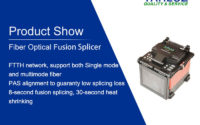Two Points Make You Fully Understand AOC Cable
With the digital process, data processing, storage and transmission have been rapidly developed. Fast-growing data networks require high-efficiency, high-bandwidth, high-reliability, low-cost data transmission media. Compared to traditional electrical interconnections, fiber-based optical interconnects have the advantages of high bandwidth, low loss, long-distance without crosstalk, and electromagnetic compatibility.
Structure of AOC
A set of data communication interconnection systems consisting of a number of optical transceivers (TRANSCEIVER) and fiber optic cable jumpers (JUMPER), namely active optical cables. Its interconnected system consisting of independent devices (optical transceiver modules, fiber patch cords) has higher speed and higher reliability, which makes the system less expensive and easier to maintain.
Active Optical Cable (AOC) = Optical Transceiver + Cable Jumper (Jumper)
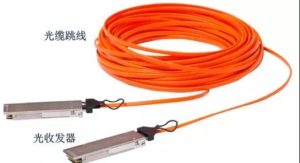
Transmission principle
Take QSFP+AOC as an example. Both ends of the cable (A and B) are QSFP optical module devices. At the A end, the data input Din is an electrical signal, and the electrical signal is converted into an optical signal of a specific wavelength by an electro-optical converter (E/O Converter), and the optical signal is modulated, coupled, and input into the optical cable. After the optical signal reaches the B end through the optical cable, the photodetection device (O/E Converter) detects the optical signal and then amplifies the signal, and Dout outputs the corresponding electrical signal. The B end and the A end are symmetrically transmitted.

Parallel optical interconnects are implemented by parallel optical modules and ribbon cables. Parallel optical modules are based on VCSEL arrays and PIN arrays with a wavelength of 850 nm and are suitable for multimode fiber 50/125um and 62.5/125um.
In terms of packaging, the electrical interface uses a standard MegArray connector, and the optical interface uses a standard MTP/MPO ribbon cable. At present, the more common parallel optical modules have 4 channels of transceiver integration and 12 channels of transceiver separation modules.
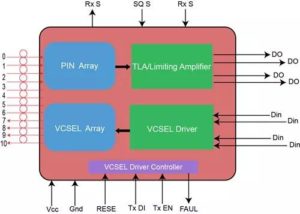
Functional parts of AOC
The light emitting portion: a VSCEL laser, a monitor diode, a driving and control circuit, and so on.
Light emission is a sub-circuit that converts a digital electrical signal into an optical signal through an optical fiber, mainly including signal modulation, static operating point adjustment, and automatic power control, and has a function of transmitting prohibition and monitoring output.
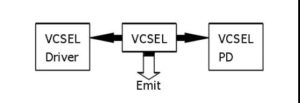
The light receiving portion: a photodiode (PIN), a transimpedance amplifier (TIA), and an auxiliary circuit.
The light receiving is to convert the weak optical signal in the optical fiber into an electrical signal, the transimpedance amplifier (TIA) outputs the limiting electrical signal, and has the function of no light warning.
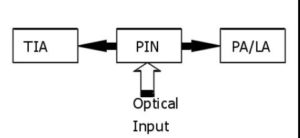
Conclusion
AOC has many advantages such as high transmission rate, long transmission distance, low energy consumption and convenient use. The length of the active cable is customized to meet your diverse needs. For more details, please visit www.tarluz.com
